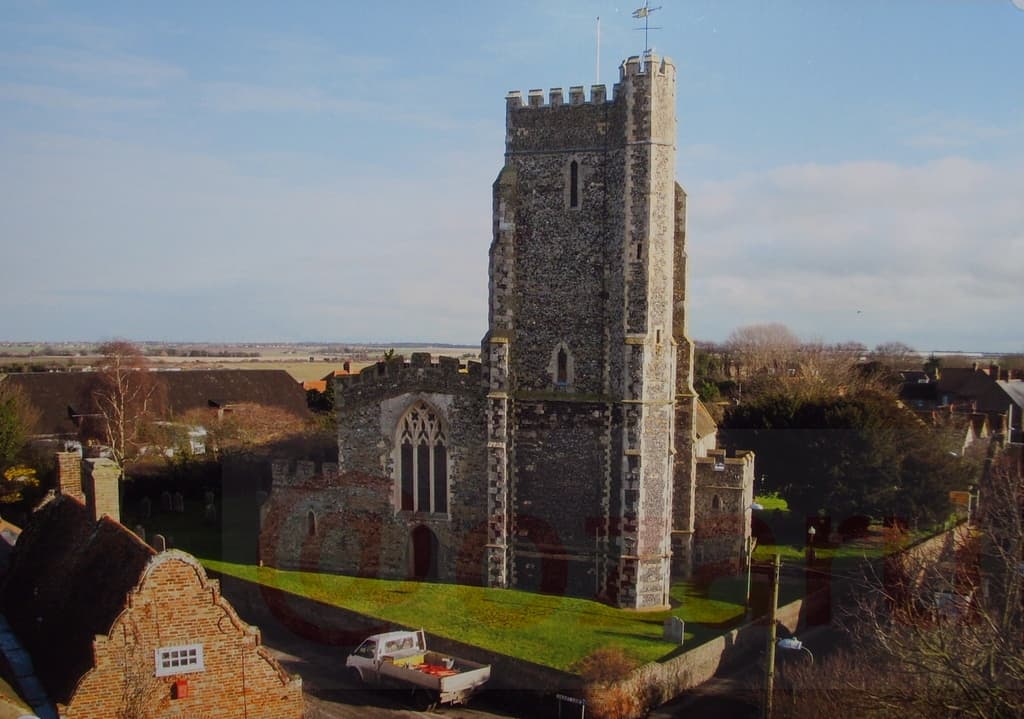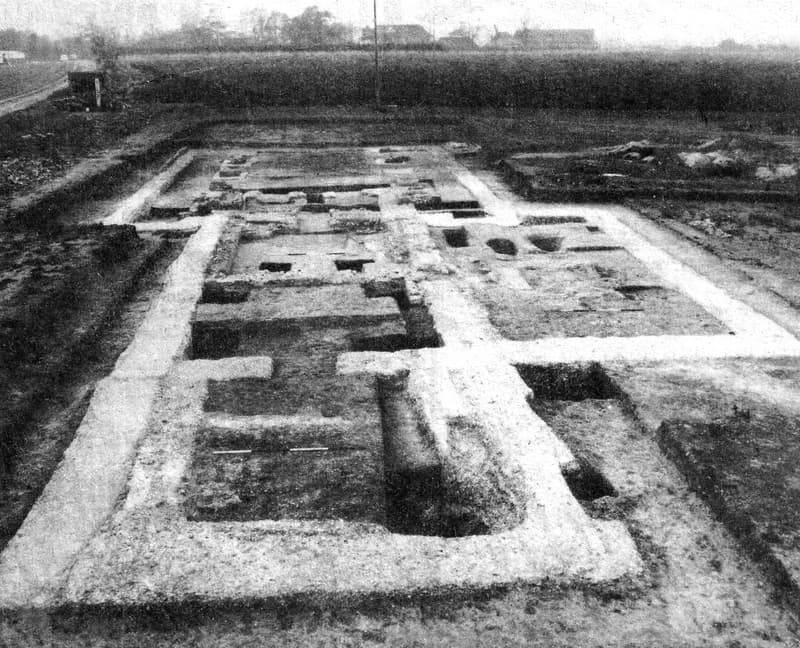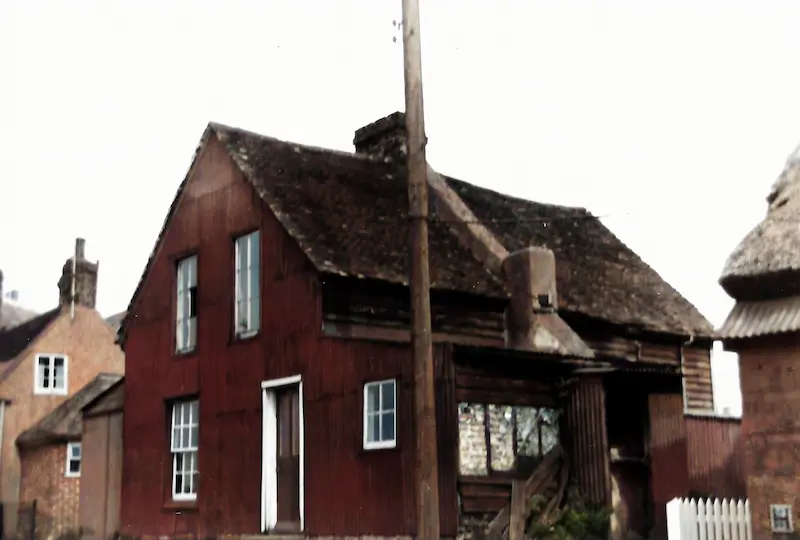St Nicholas-at-Wade church and other places of worship


 The village church is dedicated to St Nicholas, the patron saint of sailors; it is a prominent landmark for ships in the estuary and for travellers approaching St Nicholas-at-Wade and the Isle of Thanet. Built of flint, with some ragstone, it was begun in the late 11th century and much of the current form completed by the 13th century with the addition of the chancel, chapels and aisled nave. By the 14th century a SW tower, with stair turret and the nave clerestory had been added. Finally, the decorated porch and fine parvise were built by the end of the 14th century. Note the splendid squared knapped flintwork. The church is listed in Simon Jenkins's "England's 1000 Best Churches". The Trust for Thanet Archaeology's Virtual Museum report on the church has more detail, and their report on the South Chapel offers an interesting insight that can be viewed at any time from outside the church. These old articles about the village also contain further information on the church, and mention the former vicarage (destroyed by fire in 1620); the vicar later lived in Wade House, then in a new vicarage near the Post Office, until the post became a 'house for duty priest' (with the actual vicar living in Minster).
The village church is dedicated to St Nicholas, the patron saint of sailors; it is a prominent landmark for ships in the estuary and for travellers approaching St Nicholas-at-Wade and the Isle of Thanet. Built of flint, with some ragstone, it was begun in the late 11th century and much of the current form completed by the 13th century with the addition of the chancel, chapels and aisled nave. By the 14th century a SW tower, with stair turret and the nave clerestory had been added. Finally, the decorated porch and fine parvise were built by the end of the 14th century. Note the splendid squared knapped flintwork. The church is listed in Simon Jenkins's "England's 1000 Best Churches". The Trust for Thanet Archaeology's Virtual Museum report on the church has more detail, and their report on the South Chapel offers an interesting insight that can be viewed at any time from outside the church. These old articles about the village also contain further information on the church, and mention the former vicarage (destroyed by fire in 1620); the vicar later lived in Wade House, then in a new vicarage near the Post Office, until the post became a 'house for duty priest' (with the actual vicar living in Minster).
The Bridges Chapel houses memorials to the family, remembering especially Robert Bridges, Poet Laureate 1913-30 and his only son Edward, Secretary to the Cabinet. For those into genealogy, here is a list of all monuments or graves in St Nicholas-at-Wade churchyard.
The headstone of the Piscina, on the South East of the Chapel, is carved from a single block of stone, probably dating from an early Norman or late Anglo-Saxon window head. It may be a surviving fragment of a possible Saxon Church on the site. Some markings near the pulpit may be "witches' circles", designed as protection marks. The nave has some lovely late Norman arches, and the fine brass chandelier was donated in 1757. There is a carving by and memorial to the renowned 20th century sculptor Alec Miller.

The church is not only part of local heritage; it remains essential to the present and future needs of the village, and is of use to the whole community. In the Parish Plan produced in early 2012, the church was identified as a major focal point, with a high percentage of villagers (far larger than the number of weekly churchgoers or those on the church's electoral roll) saying it was one of the best features of the village.
However, it also requires constant investment to maintain its fabric (the Fabric Fund raises money for this purpose, is independent of any religious use). Back in 1957, Lord Bridges (of St Nicholas-at-Wade) made a radio appeal, saying, "The state of repair of the church was recently found to be such that immediate steps had to be taken to deal with the damage caused by death-watch beetle to practically all the main timbers in the tower and roof; the windows also had to be re-glazed and releaded. £2,000 is needed to complete the cost of restoration". Repairs in the mid-1980s — partly due to the discovery of a hitherto unknown underground crypt — cost over £77,000 as shown in these articles from the Parish Magazine and Kent Life. Then in the 1990s, over £400,000 was spent rebuilding the top of the Tower, adding a new lead roof to the Bridges Chapel, and building new toilets with an upper meeting room.
In 2000 it was discovered that the tower had been so severely damaged by an earthquake back in the 1920s that urgent repairs were needed to prevent half of it from falling off. The successful parapets appeal to repair the castellations (which let water into the walls below) raised nearly £240,000 from concerts and other village events over a 10-year stretch. A subsequent appeal replenished funds spent on repairing the wiring, lighting and sound systems. As part of this, the organ that had arrived in 1936 (the previous 1870s organ being sold on to Stourmouth) was upgraded to a 1960s organ relocated from Carshalton Beeches, more worthy of the magnificent surroundings. The next issue faced was repairs to the nave roof, as water ingress was endangering some of the monuments on the walls (in progress, estimated cost £300,000). Then in 2017-18 the great East Window was removed for urgent repairs and restoration of the stained glass (cost around £55,000): this was reconsecrated on 17 July 2018.
There are (or have been) other places of worship in the village, such as All Saints' Church at Shuart, which was 'rediscovered' (although records were known) in the 1970s.


Others include the Plymouth Brethren's Manor Hall, and the ancient underground chapel at St Nicholas Court, which is occasionally opened to the public. Family history records and other documents also refer to a Wesleyan Chapel built in 1822, presumably the building now known as "The Old Chapel" in Down Barton Road, although an older tin chapel also existed nearby at what is now Chapel Yard: it was built by John Gouger in 1799 and demolished around 1960.

For details of church services etc. see A church near you, or the church's Facebook page. Officially the church's status has shifted many times over history, from being affiliated to Reculver, to an independent parish, to part of the Wantsum Group, then a single united benefice, to its current position within the Seamarsh Group. You can also find the church on Google (with reviews, photos, etc.) and TripAdvisor. There are frequent concerts at the church, many of which are recorded and later made available on YouTube.
The St Nicholas Center has lots of information about the saint, and there is a linked St Nicholas Society who have held events at the church.